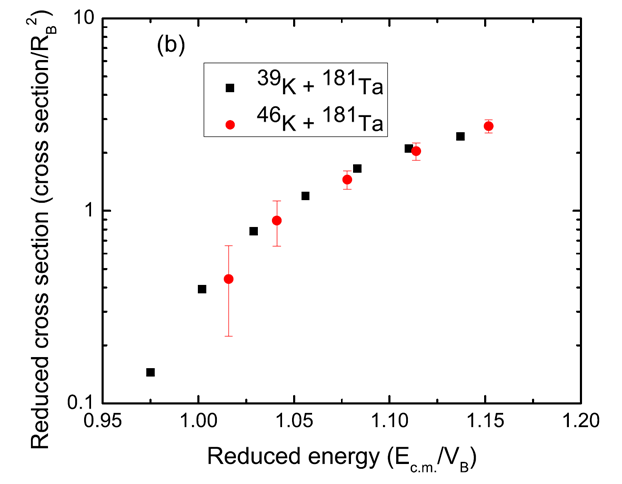Exploring Reactions that May Reach the Heaviest Elements
An important goal of nuclear science is to determine the mass/charge limit of the chart of nuclides, that is, what is the heaviest nucleus that can be produced. The framework for predicting the synthesis of new heavy nuclei involves three important pieces: the probability that two colliding nuclei will intimately contact one another, the probability that the di-nuclear system will evolve to a single compound nucleus, and the survival probability of the products from that compound nucleus. Of these three points, the evolution to a single compound nucleus, called the capture probability, PCN, is the least-well understood.
A collaboration between the National Superconducting Cyclotron Laboratory, Oregon State University and the Australian National University recently reported the results of an important and new experiment [Physical Review C97, 021602(R) (2018)] to study the capture probability using the unique capabilities of the ReA3 accelerator. The compound nuclear fission probabilities for the reactions of stable 39K and radioactive 46K with a 181Ta target were measured at the NSCL and then the stable-beam data were obtained at ANU. The results show that the capture-fission cross sections for the 46K + 181Ta reaction are slightly larger than those for the 39K induced reactions at bombarding energies near the Coulomb barrier region but the reduced excitation functions for the two reactions that are scaled for the size difference between the two projectiles do not indicate any fundamental differences between the reactions, see the figure below. The authors then used their data to estimate the production of new, exotic heavy isotopes in similar reactions and concluded that: “While such estimates are uncertain, they do indicate possible promise for the synthesis of neutron-rich heavy nuclei at FRIB.”

Figure: Illustration of the three pieces that determine if a new heavy nucleus can be synthesized. The capture cross section; the probability that the two colliding systems form a single compound nucleus; and the survival probability of the highly excited system. The product of the first two steps is measured here (Figure from K. Hammerton and E. O'Donnell).

Figure: A comparison of the scaled cross sections for fission following the capture of either stable 39K or radioactive 46K with tantalum. The agreement of the scaled cross sections indicate that the capture reaction is not unusually enhanced by the large neutron excess of the 46K beam.



